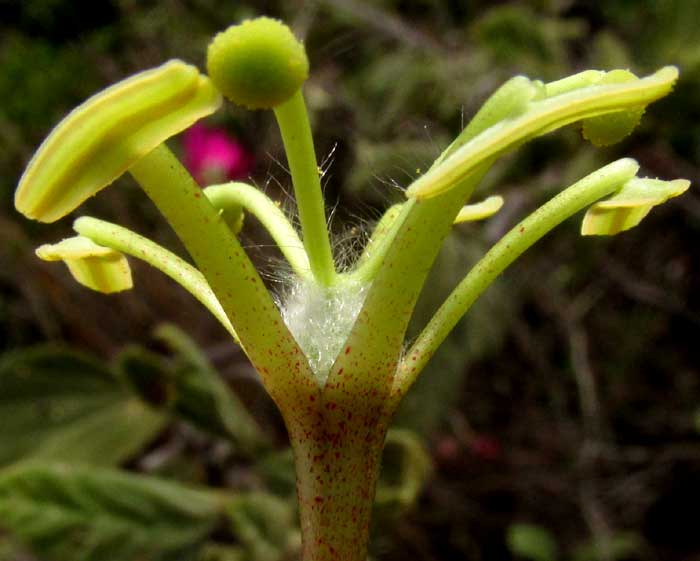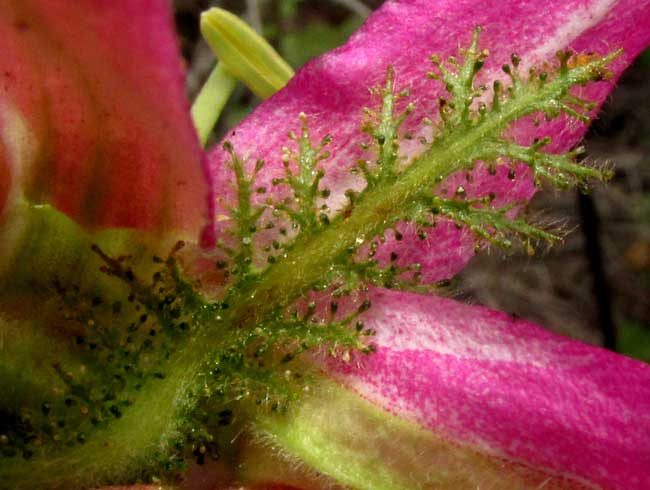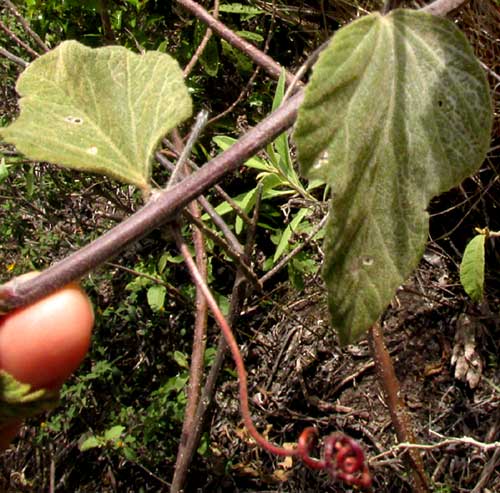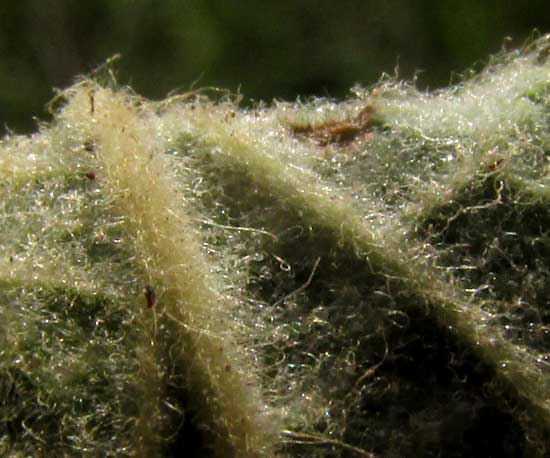Excerpts from Jim Conrad's
Naturalist Newsletter
from the August 16, 2018 Newsletter with notes from an early July camping trip to southeastern Campeche state, MÉXICO
A ROSY-FLOWERED, HAIRY PASSIONFLOWER
During my recent camping trip to southwestern Campeche state, on July 4th on a dirt road just north of Xpujil on the highway between Chetumal and Escárcega, among head-high weeds at the road's edge, splashes of rose color caught my attention, and it turned out to be something special, as you can see below:

With that extraordinary flower structure, instantly it was apparent that this was a passionflower, but I'd never seen a passionflower of this color. Normally they're purplish, whitish or greenish. If you'd like to review several different passionflower vines we've met, go to www.backyardnature.net/chiapas/passionf.htm
The spidery anatomical parts held before the blossom's mouth are what makes the the blossom unmistakably a passionflower of the Passionflower Family, the Passifloraceae, genus Passiflora. Below, a side view of the blossom shows how the unique features are held above the corolla on a sturdy stalk, or "gynophore":

In that picture the slender, white, hairlike items projecting upward around the gynophore constitute the "corona," which also is typical of passionflowers. However, it's the yellow-green structure at the top of that picture that's most interesting, and that's shown closer up below:

In that picture the spherical, grainy-surfaced, greenish item at the top is one of three stigmas, each stigma being attached to the tip of a slender style, and all three styles uniting atop the fuzzy, white thing in the picture's center. That white thing is the ovary, the future fruit. I'd also never seen a hairy passion fruit, but this hairy ovary obviously was pointing in that direction. Below the woolly ovary arise five sturdy filaments, each terminating with a banana-shaped, pollen-producing anther. Having all these parts is not so extraordinary, but suspending them in this configuration above the corolla on that gynophore, is.
Below this spectacular blossom there arose large sepals of a kind often seen on passionflower vines, but which seldom occur in other plant families, as shown below:

That entire picture shows a single sepal divided into many feathery parts, many of the ultimate hairlike divisions tipped with sticky glands. The glands form a barrier to caterpillars and other invertebrates who otherwise might eat the flower's fleshy parts.
Passionflower plants are vines, usually bearing tendrils. At first I thought that this vine was leafless, because I'm accustomed to seeing passionflower vines bearing deeply three-lobed leaves. However, by following a stem away from its blossom, it became clear that this species' leaves not only were not deeply three-lobed, but also they were densely hairy, even woolly, as shown below:

Below, you can see just how woolly the leaves were in the close-up of a leaf's underside:

As the above pictures were being taken, an old man with his bicycle laden with firewood came trundling down the road, stopped, and could hardly believe that a gringo would be so interested in such a weed so common that it grows all over his house. Hearing that, I thought that maybe the species was a pantropical weed not occurring in the northern Yucatan because of its aridity, and that it'd be easy to identify simply by searching on "red passionflower." However, it wasn't easy
By comparing Internet pictures of each of the 13 Passiflora species listed for the Calakmul Region in Campeche, I decided that we must have PASSIFLORA PALMERI var. SUBLANCEOLATA, of which very little information and few pictures are available. From the few sketchy descriptions I could find, it may be endemic just to Mexico, a variety with more white on the flowers occurring in Baja California, and our variety sublanceolata being in southern Mexico, with only the state of Campeche mentioned as a definite location.
So, possibly this was a good find. Definitely it was a pleasure meeting such a beautiful, little-known species that doesn't disdain ornamenting an old man's backwoods hut.